Food, shelter, friends, and a good yarn or two. It doesn’t get better than that. Barging gently down the Matakana River, I was transported by the tale of Dr Leslie Whetter as we cruised past the spot where his house once stood. For a moment, my imagination slipped into the life he might have led on the banks of this lethargic, tide-dependant river north of Auckland.
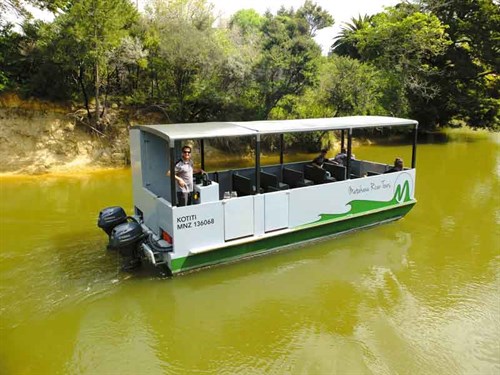
Whetter was an unconventional man, and in his time, the district’s most adventurous resident. He was a surgeon but abandoned his practice in 1911 to undertake an arduous expedition to the Antarctic as one of the team’s doctors.
He survived this ordeal and returned home to settle on the banks of the Matakana River where he took up botany, orcharding, and winemaking. As part of these endeavours, he built a small hut in the bush. He also had a ham radio and a ladder, which, during the First World War, led locals to believe he was a German spy.
We were doing plenty of spying of our own as we cruised along the pea green water. As we approached them, a family of paradise ducklings disappeared underwater like plunging puffballs. Black cormorants perched on sunken logs with their spread wings drying in the sun. A kingfisher plummeted from an overhanging branch, and a few spoonbills gathered on a jetty and with a proprietorial air began to preen their white feathers.
Matakana River history
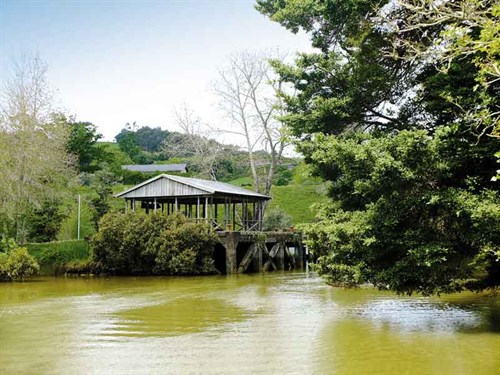
The Matakana River was once a busy waterway. From the timber milling days, which began around 1848, until the 1920s, it was the main transport route to Matakana, and until 1960, scows carrying general freight still plied the river.
Now the silence lay heavy and warm as we puttered quietly past soft swelling hills draped in pasture, pockets of native trees, and the odd stand of kauri – the giants that once seduced the early settlers into coming here. Knitted into the banks, mangrove forests offer sanctuary to spawning fish and whitebait.
The boat’s captain and owner, Phil Morris, knows this area well and as we nudged through the water, his commentary provided the backstories: the spot where a paddle wheel once operated for the sawmill that carved up the trees before they were transported by boat to Auckland; the remains of an old wharf where Matakana clay was loaded for the kiln at Brick Bay (now better known for its sculpture park and cafe); and how local clay is still used by the popular Morris and James Pottery near Matakana.
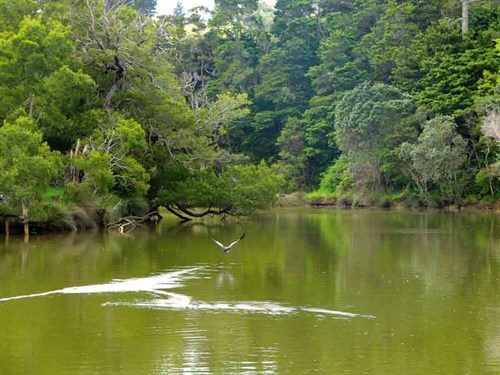
Phil is no stranger to the channels and waterways around here. As a young man, he was employed on the Kawau ferries before leaving to spend 12 years working on superyachts around the world. Although he’s more of a landlubber now, his occupations are still linked to the sea. To keep him busy during winter months, he bought an oyster farm at Mahurangi, and when a friend suggested someone should run boat tours on the Matakana River in summer he sprang into action.
The boat—Kotiti
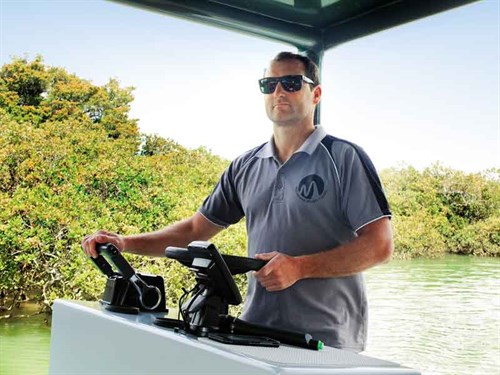
The boat he built is modelled on an oyster barge with some impressive America’s Cup technology thrown in. The result is a comfortable state-of-the-art cruising barge with adjustable seating and a composite carbon fibre canopy.
He named his creation Kotiti, the name of one of the first steamboats on the river. Near sandspit, Kotiti’s able captain turned her about. The water colour had changed from green to light blue, the result of salt water mixing with fresh.
As we nudged back up the river to the Matakana wharf, Phil brought out the wine, beer, and a platter of hors d’oeuvres and our earlier watchfulness turned to contemplation. We agreed that one hour on the river had revealed a fascinating flip side to Matakana’s modern-day environment.
The one-hour Matakana River Tours are tide and weather dependent. Chance it and just wander down to the wharf or book at matakanarivertours.co.nz.
Win a chance to experience it yourself!
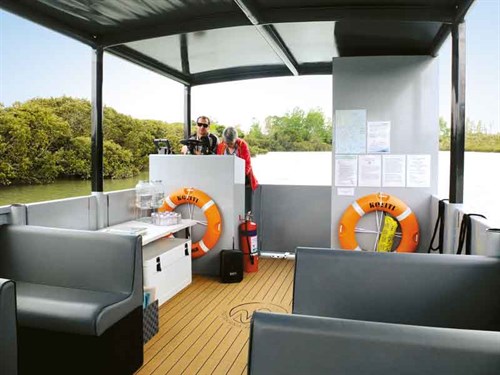
Keen to experience your own Matakana River tour? We have a double pass to give away. To win, simply enter the form on our competition page before 8 February 2018. We’ll ask our lucky winner to provide a short review of their experience, which will be published in a later issue of Motorhomes, Caravans and Destinations magazine.





